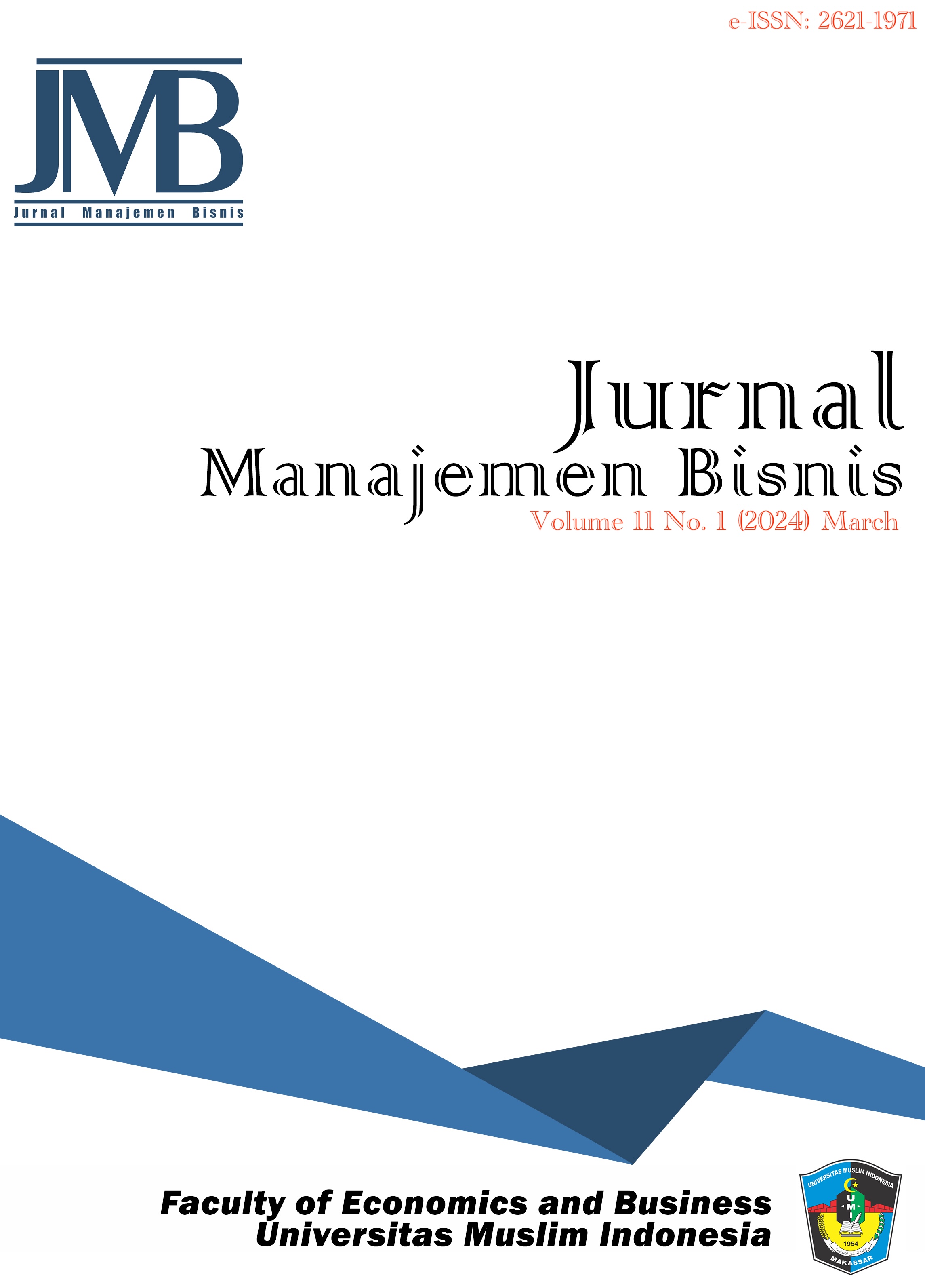Analysis of User Satisfaction with the KAI Access Application Using the Technology Acceptance Model (TAM)
DOI:
https://doi.org/10.33096/jmb.v11i2.959Keywords:
Digital applications, Digital transformation, Mobile application, Transportation industry, Technology Acceptance Model (TAM), User experience, User satisfactionAbstract
The aim of this research is to examine the variables that influence user satisfaction with the KAI Access application at PT Kereta Api Indonesia. The data collection method used an online questionnaire distributed to individuals using the KAI Access application in Binjai City. Data analysis was conducted using the Technology Acceptance Model (TAM). The research findings indicate that user satisfaction with the application increases because it is easy to use, which in turn boosts users' intention to continue using it in the future. Additionally, PT KAI (PERSERO) has the capability to conduct ongoing user research to address any issues users encounter while using the KAI Access application. The purpose of this research is to identify the challenges users face when using digital applications in the transportation industry and to provide guidelines for improving user satisfaction.
Downloads
References
Aisyah, S. (2020). Consumer attitudes and behaviors towards native advertising. ATTAWASSUTH: Journal of Islamic Economics, 5(1), 204–225.
Biomantara, K., & Herdiansyah, H. (2019). The role of Indonesian Railways (KAI) as transportation infrastructure for urban areas. Horizons, 19(1), 1–8. Retrieved from https://tirto.id/aplikasi-kai-access-sempat-error-ini-penjelasan-pengelolagT4T
Dewi, A. S., Wulandari, A., Rahayu, A., & Hendrayati, H. (2023). Gaining user satisfaction of KAI-Access: E-service quality dimensions as antecedents through e-trust. Asia-Pacific Management and Business Application, 11(3), 363–378.
Harahap, S., & Rahmatsyah. (2024). The impact of halal certificates and costs on consumer satisfaction. Journal of Sharia Accounting, 2(2), 76–88.
Joni. (2023). KAI Access: Digital service innovation of PT. Indonesian Railways. Accessed from Access by KAI.
Kartika, N. T., & Waluyo, M. (2023). Influence analysis of the Technology Acceptance Model approach on user satisfaction and repurchase intention on the KAI Access application using the SEM method. Indonesian Journal of Industrial Engineering & Management, 5(1).
Marangunić, N., & Granić, A. (2015). Technology acceptance model: A literature review from 1986 to 2013. Universal Access in the Information Society, 14(1), 81–95.
Martinus, J. (2024). The KAI Access application had an error; here is the manager's explanation. Tirto.ID.
Musaa, H. G., Fatmawati, I., Nuryakin, & Suyanto, M. (2024). Marketing research trends using the Technology Acceptance Model (TAM): A comprehensive review of research (2002–2022). Cogent Business & Management, 11(1), 2329375.
Mulyani, A., & Kurniadi, D. (2015). Analysis of student information terminal (S-IT) technology acceptance using the Technology Acceptance Model (TAM) (Case study: AMIK Garut). Journal of Scientific Insight, 7(12), 24.
Nasution, M. I. P. (2014). Competitive advantage with information technology.
Nurbaiti, N., Asmuni, A., Soemitra, A., Imsar, I., & Aisyah, S. (2003). Behavior analysis of MSMEs in Indonesia using fintech lending: A comparative study between sharia fintech lending and conventional fintech lending. JPPI (Jurnal Penelitian Pendidikan Indonesia), 9(4), 92–99.
Nurlinda, R. A. (2014). The effect of customer satisfaction strategy on improvement of customer satisfaction. Forum Ilmiah, 101, 172–181. Overparameterization Problem. Journal of Physics: Conference Series, 1811(1), 012086.
Parasuraman, A., Zeithaml, V. A., & Berry, L. L. (1988). SERVQUAL: A multiple-item scale for measuring consumer perceptions of service quality. Journal of Retailing, 64(1), 12–40.
Priyastama, R. (2017). SPSS as the most widely used statistical program package in the world. The Book of Magic Masters, SPSS (p. 15). Bantul: Star Up.
PT. Indonesian Railways. (2023). Easier access with the KAI Access application. Retrieved from https://www.kai.id/information/full_news/5758-akses-lebih-mudah-dengan-app-access
Ray, I. W. (2020). Analysis of usefulness, convenience, and trust factors on the intention to use the Uc student application. Business Management Journal, 161, 97–112.
Ritonga, A. I., Hasibuan, R. H., Pohan, R. A. R., Lubis, K. N., & Nurbaiti. (2023). The role of technology in the development of e-business. VISA: Journal of Visions and Ideas, 3(2), 434.
Suhairi, I., Irmawani, D., Aisah, M. N., Purba, S., & Nasution, A. M. (2023). The role of global marketing management in improving consumer satisfaction. Journal of Management and Social Sciences, 1(1), 42–51.
Yuliana, Sanjaya, & Shobary. (2016). The normality test as a statistical analysis to check whether the data is normally distributed. Journal of Statistics.
Downloads
Published
Issue
Section
License
Copyright (c) 2024 JMB UMI

This work is licensed under a Creative Commons Attribution 4.0 International License.






